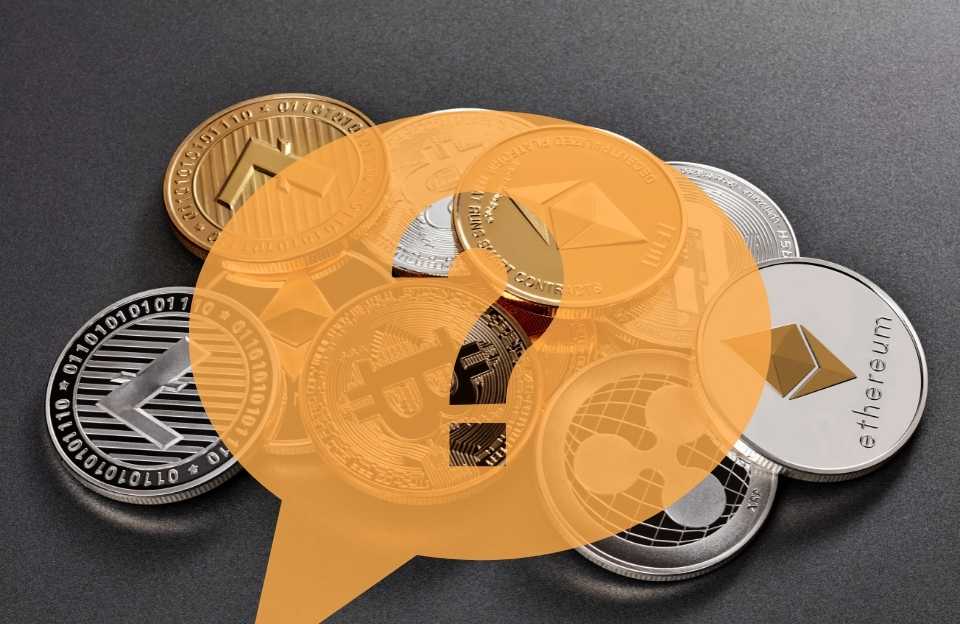Luis Clark
- Home
- /
- Guides
- /
- Intermediate
- /
- What is an ICO?...
What is an ICO? Initial Coin Offering Explained
Luis Clark

What is an ICO?
An initial coin offering (ICO) is a type of capital-raising activity within the cryptocurrency industry, equivalent to an initial public offering (IPO).
A company launches an initial coin offering to raise funds for developing a new coin, app, or service. An interested investor can purchase an initial coin offering to receive a new cryptocurrency token that the enterprise issues. Digital assets, known as tokens, are constructed on the blockchains of other cryptocurrencies. This token may be useful to investors as it may signify ownership of the company or project, or they can use tokens on the platform to buy products or services the business offers.
The main distinction between initial coin offerings (ICOs) and initial public offerings is that funding an ICO does not guarantee ownership of the underlying crypto project or business. Participants in ICOs wager that a now worthless currency will eventually appreciate over their initial investment. Another difference between an ICO and IPO is the regulatory oversight.
At their peak phase in 2017, ICOs had surpassed venture capital as the primary fundraising technique for blockchain startups. However, venture capitalists have started to pay attention and are looking for a means to get back into the market. When conducting an ICO, a blockchain-based firm creates a specific number of its native digital token. It sells them to early investors, typically in exchange for other cryptocurrencies like Bitcoin or Ether.
As a type of digital crowdfunding, an initial coin offering allows startups to raise money without sacrificing equity and to build a community of users motivated to support the cryptocurrency project so that the value of their presale tokens increases. The main purpose of ICOs for startups is to raise funds. The primary benefit of initial coin offerings is that they do away with intermediaries in the capital-raising process. Unlike an initial public offering, there are no restrictions on who can invest. It is a quick and effective way for startups to raise funds.
While an initial coin offering can provide an easy way to raise funds and a novel way for startups to generate capital, the token gives investors access to some of the project features and increases the token’s price if the project is successful. Once the tokens are listed, buyers can realize these gains by selling them on cryptocurrency exchanges. ICO investors can also increase their investment in the project by buying extra tokens when they go on public sale.
Initial coin offerings can provide sizable profits, but they are also risky because they are unregulated. To know more about what an ICO is and how they work, read on.

An initial coin offering (ICO) is when businesses or crypto projects raise funds by releasing a new digital token. Companies can create their digital coins or tokens and offer them for sale to investors wishing to put money into a specific business or an emerging cryptocurrency.
The benefit of having an ICO is that investors can typically buy them for a trifle. After that, investors have two options: use them on the platform when it launches, or save them for subsequent trading on cryptocurrency exchanges.
Another benefit of initial coin offerings is that they enable direct communication between projects and investors by eliminating intermediaries such as venture capitalists, banks, and stock exchanges from the capital-raising process. Additionally, the interest of both parties is aligned.
The blockchain is a digital ledger recording all transactions. It is extremely safe and impossible to tamper with. Once the business develops its blockchain technology and cryptocurrency or tokens, it can launch initial coin offerings and sell those to investors.
ICOs are a way for new crypto projects to raise funds and create innovative products with the support of early investors, much like how crowdfunding platforms and other alternative investment channels operate.
History of ICOs
The history of ICOs dates back to 2013 when Mastercoin raised over 5,000 BTC through its token sale. It was one of the most effective crowdsourcing projects ever at the time. The ICO began in 2013 when software programmer J.R. Willet raised $600,000 by writing a white paper titled “The Second Bitcoin White Paper” for the token MasterCoin (later rebranded as Omni Layer). Seven projects had raised a combined $30 million by the year 2014. While Mastercoin pioneered the process, the industry didn’t start to pay attention until Ethereum (ETH) raised money through its own ICO in 2014.
Ethereum‘s ICO was the first real success story of token sale using ICOs as a comparatively new fundraising method, raising USD15.5 million in 2014. On May 12, 2021, ETH, initially sold in 50 million lots for $0.311 each, reached an all-time high of $4,382.73, giving investors a 1,408,903% return on their investment. It is currently one of the most valued cryptocurrencies, and because of its technology, it has enabled a whole ecosystem of decentralized applications (Dapps) to flourish.
Even so, it was not until 2017 that ICOs became a popular fundraising opportunity and saw several successful initial coin offerings. Although ICOs raised less than 2% of the capital raised by IPOs by the end of 2017, they had nearly raised 40 times as much capital as they had in 2016.342 new tokens entered the cryptocurrency market in 2017, and their initial coin offerings raised close to $5.4 billion.
In the aftermath of the 2018 ICO bubble, ICOs raised an astounding $7.8 billion. However, the fundraising frenzy was short-lived. This funding approach vanished from view as the entire cryptocurrency industry disappeared. According to estimates, ICO fundraising decreased by 95% in 2019 to $371 million.
The failure of most cryptocurrencies created during the 2017–2018 frenzy may have contributed to the downfall. The number of dead crypto coins is in the hundreds and increasing (as determined by abandonment, fraud, and/or lack of activity on the blockchain). This has made it more difficult for good ICO projects to raise money from investors and weeding out bad projects.
Many scammers quickly recognized the significant sum of money raised through these coin IPOs as an easy opportunity to make quick money. As the number of scams increased, ICOs began generating unfavourable press, as well as crucial funds for legitimate companies.
Types of ICO

Private ICO
Private ICO offerings are restricted to a small number of investors. While a company may decide to set a minimum investment requirement, private ICOs frequently restrict participation to approved investors (high-net-worth individuals & financial institutions).
Public ICO
ICOs open to the public are a sort of crowdfunding. Because practically anyone can invest, the public offering has democratised investing. However, due to regulatory concerns, private ICOs are beginning to appear more appealing than public offers.
How Does An ICO Work?

A sophisticated process that involves a thorough understanding of technology, finance, and the law is an initial coin offering. The main idea behind ICOs is to raise money in ways that align the interests of various stakeholders by utilising the decentralized nature of blockchain technology. When any company decides to opt for an ICO, the following steps are involved.
1. Choosing appropriate investment targets
Every ICO begins with the company stating its desire in raising funds. The company decides the recipients of its fundraising campaign and prepares the necessary information about the business or project for potential investors.
2. Creation of tokens
The creation of tokens is the next stage of the initial coin offering. The tokens are essentially digital representations of assets (digital assets) or services on the blockchain. The tokens can be traded and are fungible. Since the tokens are modifications of current cryptocurrencies, they should not be confused with cryptocurrencies. Unlike stocks, the tokens often do not offer an equity stake in a company. Instead, most tokens offer ownership of a product or service the business has created.
These blockchain platforms are used to create tokens. Because a company does not have to write the code necessary to create a new coin from the start, creating tickets is rather straightforward. Instead, the production of the tokens is possible with only small code alterations on existing blockchain platforms that power cryptocurrencies like Ethereum, Solana, Velas, or Binance Chain.
3. Promotion campaign
A company typically launches a marketing campaign concurrently to entice potential investors. To reach the broadest investor base, it should be noted that the campaigns are often run online. The advertising of ICOs is now prohibited on several sizable online platforms, including Facebook and Google.
4. Initial offering
The tokens are made available to investors after they have been created. There may be numerous rounds to the offering. The company can then utilise the funds raised from the ICO to provide a new product or service. Investors can either expect to use their token purchases to gain access to these products and services now, or they can wait for the value of their tokens to increase.
Function-Based Tokens

By releasing tokens on a blockchain (a database of data that has been encrypted using cryptography) and then distributing them in return for monetary contributions, entrepreneurs can generate money using the ICO fundraising model.
These tokens, which can later be exchanged on a cryptocurrency exchange like Binance, or Crypto.com, for example and moved throughout the network, can be used for different purposes, ranging from giving the user access to a certain service to giving them the right to business profits. Tokens can be utility or security tokens, depending on their purpose.
Utility Tokens
Utility tokens, sometimes known as “user tokens” or “app coins,” signify potential future access to the company’s goods or service. Utility tokens enable ICO entrepreneurs to raise money to assist the development of their blockchain ventures in exchange for future access to the service. Because they are not intended to be used as a standard investment for company shares, utility tokens are exempt from federal securities laws, provided they are properly structured. For example, Binance (BNB) is a utility token.
In most cases, a utility token is unregulated. It is used by startups to raise money for their projects in exchange for future access to a service that is still under construction. A startup can offer “digital coupons” for the service still in development by producing utility tokens, much to how electronic stores take pre-orders for video games that might not be published for a while.
Security Tokens
In contrast to utility tokens, if a token derives its value from an external, marketable asset or has the potential to gain in value due to the actions of others, it may be categorised as a security token and come under the purview of federal securities laws. Failure to follow these rules could incur expensive fines and threaten to stall a project. A company must therefore fulfil all of its regulatory requirements.
Once the security token is correctly categorized, a broad range of applications are allowed, with the capacity to create tokens that reflect firm stock appearing to be the most promising.
White Paper Release
In order to convince enthusiasts and supporters to purchase some of the project’s tokens, the project releases this paper as part of its ICO campaign.
A company creates a concept for a blockchain-based good or service. The ICO’s plans are described in this paper or other comparable documents. This includes the amount of funding needed, how many tokens will be issued, who can contribute, how the tokens will be given out, etc.
Afterwards, a website is made with detailed information on the project and the paper. These preliminary details are intended to persuade investors into buying tokens during the ICO process.
The corporate website and the proper social media channels are used to promote the ICO to increase its visibility and pique public interest. In return for tokens, investors send funds on or after the ICO’s launch date.
ICO Regulations
The initial coin offering is a brand-new development in both technology and finance. The emergence of ICOs made a big impact on capital-raising processes in recent years. However, the arrival of the new fundraising model in finance caught regulatory agencies everywhere off guard.
Different nations take different approaches to the regulation of initial coin offerings. For instance, around the same time, South Korea and China firmly enacted outright prohibitions on ICOs, while Thailand put a temporary ban on token offerings as officials prepared a new legal framework. Along with the United States and Canada, numerous European nations are developing specific legislation to control the operation of ICOs. In addition, other nations, like Australia, New Zealand, Hong Kong, and the United Arab Emirates, have already published regulations regarding ICOs.
As attention mounted, so did scrutiny and worries regarding the legality of token sales. When the Securities and Exchange Commission (SEC) warned that if a digital asset sold to US investors had the characteristics of a security, it had to follow U.S. securities laws or risk legal penalties.
There is a lot of enthusiasm surrounding ICOs, and there are many online forums where investors meet to discuss new opportunities. Several well-known celebrities have urged their followers or fans to invest in a trending new ICO. The Securities and Exchange Commission cautioned investors, claiming that it is against the law for celebrities to promote ICOs on social media channels without revealing the payment they received.
Many of the tokens sold in ICOs are regarded as securities (financial instruments) by the U.S. Securities and Exchange Commission, which necessitates either registration or exemption from registration and compliance with federal securities regulations on the part of the company selling them.
The first case of the SEC crackdown on an ICO took place on Dec. 11, 2017, when the agency stopped an ICO by Munchee, a California company with a food review app. Munchee was attempting to raise capital to create a cryptocurrency that could be used to place orders for meals within the app. The SEC declared the ICO to be an unregistered securities offering and sent a cease-and-desist letter in response.
Things to Know Before Investing in ICOs

Numerous fraudulent activities involving ICOs have resulted in scammers defrauding naiive investors out of millions of dollars. ICO scams know no boundaries. In April 2018, Vietnam-based Pincoin disappeared after an ICO raising $660 million. When the enterprise first began in Vietnam, 32,000 investors gave it their money after being promised high profits.
It’s crucial to incorporate the following into your due diligence process if you intend to take part in an ICO:
- Check the project’s team to see if members have a track record of building profitable enterprises. Team members should ideally include links to their social media profiles so that others can contact them.
- Examine the white paper and roadmap for the project to see how the desired product or service will function and when specific features will launch
- Check to see if any code has undergone an external audit. This will be a reliable sign that a project takes security seriously.
- Check the website for typos; these are typically the first indications that it was created fast and carelessly and may indicate that it is a fraud.
Final Thoughts
Should You Invest in ICOs? Investing always includes risks. Whether you invest in equities, bonds, or cryptocurrency, this is true. With proper planning and research, you can reduce those risks and profit reasonably from participating in an ICO with due diligence & research.
ICOs are a great opportunity to invest early in a new cryptocurrency project. However, completing your research before investing in an ICO is crucial because numerous risks are involved.
Since ICOs are a relatively new idea, some people have questions about the actual value of the tokens and how simple it is for the issuer to get wealthy. In the end, only time will tell whether this develops into the future of financing businesses or is just an issuer “get rich quick” gimmick.
FAQ
Most frequent questions and answers
Although the first cryptocurrency to employ an ICO did so as part of its campaign, Bitcoin didn’t have an ICO. In its initial coin offering, Mastercoin raised about 5,000 BTC, which at the time was worth about $500,000.
You can sell the tokens for a profit once the project is finished and they are posted on crypto exchanges. An ICO’s primary goal is to give early investors a discount on the token’s price. Investors are drawn to ICOs because of their promise to yield large returns quickly after making an initial investment.
If you’re asking, “What is an ICO?” you could say it’s a means for entrepreneurs to generate money by releasing their coins. Additionally, it’s an excellent strategy for building investor communities and brand loyalty through a token offering.
Advantages
- If you can identify which cryptocurrency is a suitable investment, they have great profit potential. Prices are usually lower because you’re buying early, and other ICOs give tokens at a discount.
- Tokens are typically posted on crypto exchanges, especially those that have had profitable sales. New investors who missed the token offering will be able to buy the coins once they are posted. There can be huge benefits if a project has effectively promoted itself.
- Everyone has access to ICOs. No limitations apply to who may invest. It’s a process that, in many respects, is simpler than an initial public offering (IPO) on the stock market.
- It’s a quick and effective way for startups to raise capital.
Disadvantages
- Due to the volatile nature of cryptocurrency projects, there is a high possibility that the token will depreciate or fail outright.
- The absence of regulations leads to an increase in fraud and subpar projects. Finding a good startup among the impending ICOs can feel like looking for a needle in a haystack.
- To invest in ICOs, you typically need to have some knowledge of crypto wallets. It’s sometimes simpler for beginners to stick to publicly traded cryptocurrencies or cryptocurrency stocks.
- Begin with the research, which is a pivotal component.
- Determine the company’s eligibility for an ICO
- Select a demand-driven idea for your token.
- Specify the project team, objectives, and parameters.
- Create a solid team
- Write a strong ICO white paper that clearly communicates the project goals.
- Clarify the terms for investors
- Other factors include timing, P.R. and marketing, hiring an ICO agency, building investor trust, and following rules and regulations like SEC regulations.
Every token sold through an ICO is regarded as a high-risk investment. Before you invest any money, be sure you are aware of the risks involved with trading. Investors are unprotected if an ICO fails or turns out to be fraudulent. The market is currently poorly regulated, and there are many fraudulent initial coin offerings. According to a 2018 Satis analysis written for Bloomberg, nearly 80% of ICOs were reportedly fake at the time.
Skrumble.com provides all its content for informational purposes only, and this should not be taken as financial advice to buy, trade, or sell any investment instruments or products, including but not limited to cryptocurrencies, or use any specific exchange. Please do not use this website as investment advice, financial advice, or legal advice, and each individual’s needs may vary from that of the author. Investing in financial instruments, including cryptocurrencies, carries a high risk and is not suitable for all investors. It is possible to lose the entire initial investment, so do not invest what you cannot afford to lose. We strongly advise conducting your own research before making any investment decisions. This post includes affiliate links with our partners who may compensate us.
To view our privacy policy read here.






